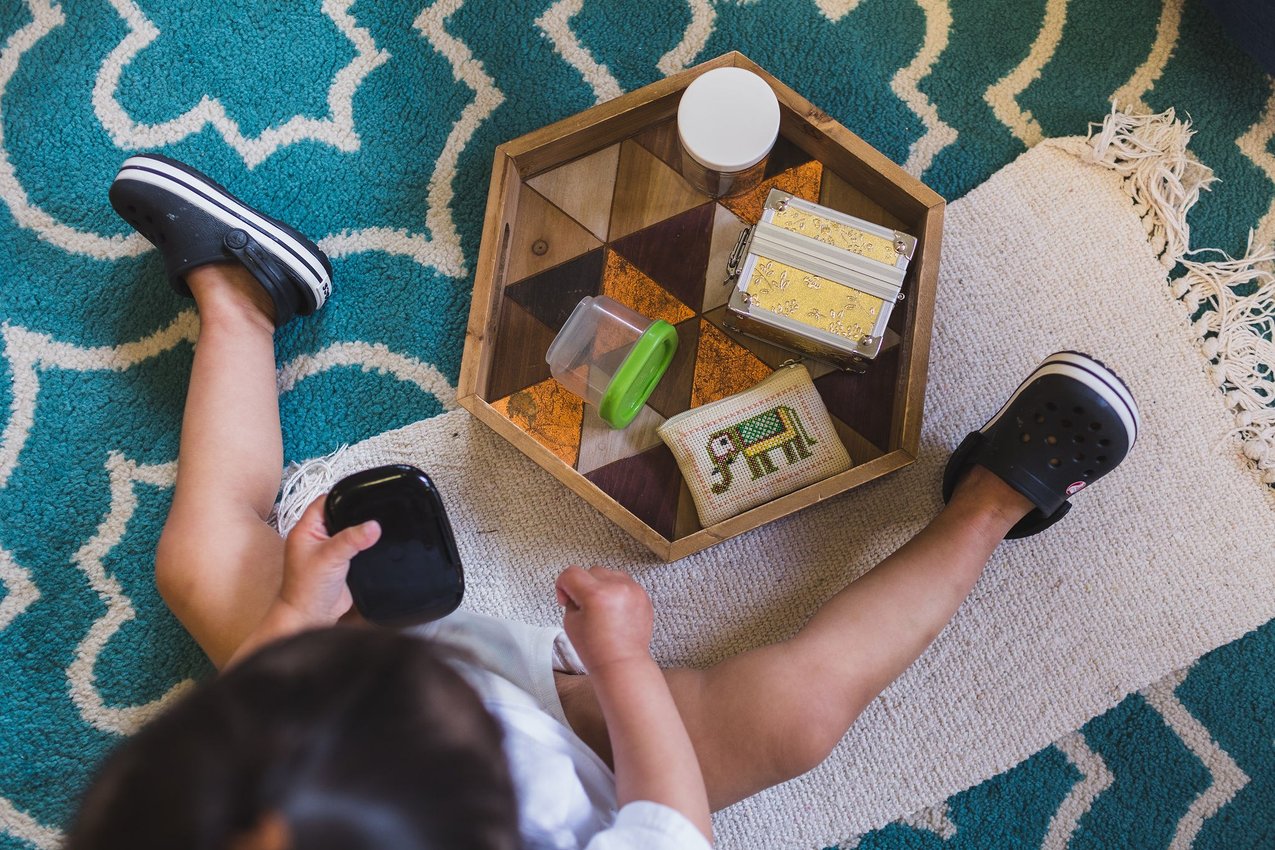
Toddler Montessori in the Home
Since we are away from school, many parents have their children at home with them, while trying to work. I’d like to give some suggestions on how to incorporate Montessori in the home for children of any age but today, we will keep our focus on the toddler aged child. Just to be clear, you do not have to go out of your way and spend money to make your home look like your child’s classroom. If anything, we try to replicate our classroom to feel like a home environment.
Before we get into Montessori in the home, let me give you a little background on Montessori. Montessori education was created by Maria Montessori in the early 1900s, she was an Italian educator, physician, and scientist. Through her work and observation, with poor to low- income families, she refined the use of experimental materials like blocks, puzzles, prepared meals and other hands- on learning tools, and later saw that the children had a sense of calmness and peace, deep concentration, sense of order for their environment and, themselves. Still to this day, people are still using her method in public and private schools around the world.
When families in the community come to observe our school on Tuesday and Thursdays, they’ll see that all the environments are beautiful, orderly, and intentional. The environment is prepared each day, specifically to meet the needs of the child. This allows the child to explore each day with using their senses and to cultivate a life- long love of learning.
Each area in the environment has a purpose for different developmental functions. Such as sensory, hand eye coordination, arts and craft, practical life and food preparation (daily life skills), and language. Each child chooses an activity, they either take it to a work rug or a table, and engages on their activity independently.
Creating Space for your Montessori Child at Home
Create a safe space for your child to work independently. Include objects that are small and easy for your child to handle. The space you’re creating does not need to be a big space. It could be a little nook where you can add a low shelf and a quiet space for a basket of books. Some things to consider are:
- Low shelf- openly displayed activities, you can put 4-5 items that your child is interested in on the shelf (blocks, stringing beads, puzzle, art, opening and closing variety of containers, etc.), you don’t want to over stimulate them with activities. Your child can choose one activity at a time; when finished, they can put it back on the same spot they found their activity. It is important to model this behavior of taking a work out and putting it back on the shelf when introducing this new space.
- Small tables and chairs- I know these items can be difficult to find, don’t stress. If the chairs and tables at home are lightweight and your child can easily move them around, that’s perfect. You can use the chair and table space for art, snack, etc. Or, if you have an old coffee table or side table you can convert them into a workspace, that can work well, too!
- Various sized trays or baskets (ones that your child can carry independently)- A single activity will go on/in their own individual tray or basket. That one activity will be the focus point. When looking for trays and baskets, I like to use natural wood or wicker baskets or trays to store the activities. They look more inviting and pretty on the shelf. In the classroom environment, I will introduce and show the child how to use the activity first and then invite the child to use the activity right after. You can also do this at home. This allows you to show the child how to put the activity away when they are done.
- Small utensils/child size utensils, jugs, tongs, etc. - These tools are used daily at home and our environment. You can find them mainly in our practical life area. Things like jugs for pouring water, tongs for transferring one item from one plate to another, spoons and forks for eating and glass cups for drinking. The spoons we use are ice cream spoons, the forks are pickle forks, and the glass cups are shot glasses.
Please do not go out of your way to spend a ton of money on any of these items. You can find them in your home, thrift stores, dollar store, or online.
The most important thing to consider when setting up a space for your child is safety. I found that sitting on my bottom, pushing on elbows against my sides is a good way to gauge the accessibility for your young child. I know this may sound crazy, but it was helpful for me to get an understanding of the space, and to see if the child can easily see and reach their activities. Other things you should consider when setting up your space:
- Are there sharp edges or objects around?
- Are there outlets or cords visible? Are they covered?
- Can my child reach things I do not want them to touch?
- Are there chemicals around?
Setting up a home environment specifically for your child can seem like a daunting task but it’s pretty simple. Don’t worry about making things perfect, do the best you can. Even if you incorporate some of the suggestions mentioned would be a great start, you can always add to it later.
Sophie Nguon, Hawthorn Toddler Guide
Gerri Yokers, Dogwood Toddler Guide
